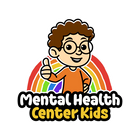A study published in Frontiers for Young Minds looked at how people work together by paying attention to the same thing, known as joint attention.
The researchers wanted to know if two people are better than one at completing a task and whether just believing someone else is paying attention to the same thing helps with memory.
In the lab, pairs of participants did a visual search task alone and then together. They worked faster and made fewer mistakes when working as a team, especially when they split the task.
In another part of the study, people looked at pictures while thinking a partner might be doing the same task. They remembered the pictures better when they believed their partner was focused on the same thing.
Understanding the Research
The goal of the research was to understand how joint attention works and how it helps us learn. The authors wanted to know the following:
- Are two people better than one at completing a task?
- Does thinking that someone is looking at the same thing help you remember it better?
To answer question #1: Are two people better than one at completing a task?
Here, researchers asked pairs of people to do a visual search task. Each person had to look at a screen and try to find a target shape, like a square, among other shapes. First, they did the task alone. Then, they did the same task together. Sometimes, the pairs just worked together without a plan. Other times, they used a strategy where each person searched a different area, like one person looking on the left side of the screen and the other on the right.
Results: People were faster and more accurate when working together than when working alone. They were especially fast when they divided the task between them.
To answer question #2: Does thinking that someone is looking at the same thing help you remember it better?
Here, participants looked at pictures while being told they had a partner. Sometimes they had to remember the pictures, and other times they searched for a hidden X. They were told their partner might be doing the same or a different task.
Results: People remembered the pictures better when they thought their partner was doing the same task. This shows that just believing someone else is paying attention to the same thing can help improve memory, even without talking or working together.
Strategies for Parents and Caregivers
Joint attention isn’t only useful in research — it has a valuable role in everyday life, from a child’s home routines to classroom activities. So, how can parents and caregivers use these findings? Here are some tips:
Share focus during learning or playtime
When your child is playing, creating, or reading, use these moments to:
- Sit with them
- Watch what they’re doing
- Join in by pointing, asking questions, or commenting on what you both see
For instance, if they’re building with blocks, you can say, “I see you’re making a tall tower. Can I add a block too?” or “You’re building something amazing. What should I build next to it?”
Limit distractions during shared activities
Distractions can make it harder to tune into your child’s cues, interests, and attempts to communicate with you. Children can sense the disconnection and may act out to get you to focus. Examples of distractions include phones, background TV, or multitasking.
Consider setting healthy boundaries around technology to create more meaningful moments together.
Give them chances to interact and work with others
Our kids learn essential interpersonal skills like sharing, taking turns, and compromising as they engage in real interactions with their peers. These skills cannot be taught through instruction alone. Parents must allow children to practice them in social contexts.
You can start by organizing one-on-one playdates and keeping initial visits short. Another great idea is to plan activities that require cooperation: cooking meals with relatives, family game nights, household projects, or vacations. Moreover, consider enrolling them in classes or clubs that align with their interests.
The authors are encouraging us to value joint attention to feel more connected in everyday life!
To help kids practice shared focus, communication, and teamwork, check out our Social Skills Worksheets.





















































